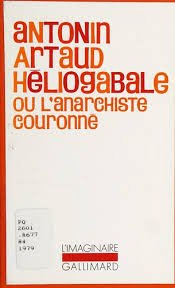SHETANI’S SISTER - ICEBERG SLIM
I think I’ve got just 2 or 3 more Iceberg Slim novels to go and then I’ll have read them all. This is one of the later novels, one of the last two completed and published before his death and published by a non-Halloway House publisher. As a pure novel, this is one of the best one’s I’ve read. Slim typically follows a single character, almost always a pimp or con-man or other denizen of the underworld, and tells their full story over the course of a book. This book actually has 2 main characters, and a number of fleshed-out side characters, and alternates their stories until they meet up. One of them is an alcoholic vice cop, Rucker, who’s obsessed with keeping the streets of Hollywood free of hookers and the other is Master Shetani (who the book more than once points out is “Satan” in Swahili) a brutal pimp who’s trying to move his operation from NYC to Hollywood. Shetani is one of the best and darkest of all the Iceberg pimp-characters. He’s half-YT, a trop of Slim’s for whatever reason, with hellish green eyes which he has a mural of above his bed. He employees two murderous brothers as enforcers and keeps his stable of girls addicted to heroin to keep them in line. He even has a coat of arms painted in his room of a hypodermic needle and a coat-hanger crossed over one another. Shetani is also an addict, and the book subtlety highlights how this puts him in the same position as his girls vis-a-vis his supplier, the Mafia. What’s most interesting about this character is his slow (or slow at first) unraveling and descent into madness. Most of the other Iceberg books take on a the pimp/hustler character’s rise, this one focuses on the fall. Shetani is obsessed with his younger sisters, who died in a hospital when they were both wards of the state after Shetani kills his abusive YT mother. Shetani actually spent years in a psych ward for attacking nurses and doctors at the hospital that failed to save his sister. This would be typical Iceberg back story, tons of his pimp characters hate and/or kill their mothers, except Slim takes it a degree further by having Shetani become obsessed with the idea of reincarnation and then obsessed with the idea that a new working girl he cops is his sister reincarnated. The tragedy lies in the fact that he can’t show any weakness and help this girl, who he thinks is his sister, get out of the life without everyone in his world assuming that he’s squared-up and is no longer the most heartless pimp in the game. Needless to say, shit gets insane. The cop story line is not as compelling but still interesting. The hero cop is a bit flat, besides being a recovering alcoholic Rucker is flawless, but his partner gets addicted to cocaine and seduced by a ho of Shetani’s. This story features lots of great LA stuff, since LA was the city Slim spent the last part of his life. The climax is a bit abrupt, I actually wonder if a chapter was cut off of my version. All that being said, like most Slim books, this would make a great movie. It’s almost Wire-esq in it’s balancing of cop and crook story-lines. And, of course, no one writes evil pimps better than Slim. I actually think this would be a good place to start with Iceberg if you’re thinking about getting into his work, especially the novels that aren’t PIMP. 1992 satanic pimps.
As always with Slim, this book has an amazing collection of street names:
-Master Shetani
-Pee Wee Smith
-Kansas City Nettie
-Petra
-Froggy
-Judas Jimmy
-Eli and Cazo (brothers)
-Railhead
-Cool Walker
-Big Cat
-Tree
-Lovely Leon
-Rainbow
-Sugar Red
-Sir Lady Java
-Tank
-One Pocket
-Red Dog
-Big Cotton



















